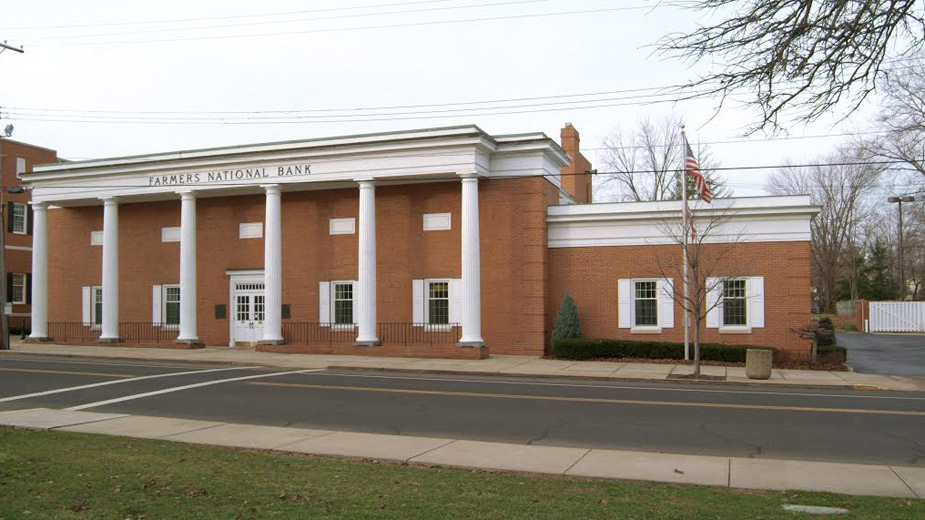Tech Guides Farmers Bank Through Virus Relief Efforts
CANFIELD, Ohio – Across the country, banks have had just seven days to prepare to accept applications for businesses looking for their slice of the largest economic relief package in American history.
Even as late as Thursday afternoon, says Farmers National Bank President Kevin J. Helmick, banks were still waiting on the final guidance from the Small Business Administration and Treasury Department on the exact details of loans awarded through the $349 billion Paycheck Protection Program.
Businesses can get loans of up to 2 1/2 times their average monthly payroll that can be used to pay workers, mortgage and lease payments and utilities. If an approved business keeps all its workers through Sept. 30, the loan is converted to a grant.
The Coronavirus Aid, Relief and Economic Security Act was signed into law March 27 and loan applications will be accepted starting Friday. Farmers’ commercial lenders have been working on educating clients about what all they’ll need to submit an application and the finer details of the program.
“If you’ve furloughed or laid employees off, you have until June 30 to bring them back and keep them on for about three months, through September 30,” Helmick explains. “It’s 2 1/2 times your monthly payroll, with everybody capped at $100,000. You can have employees making over $100,000 going into the calculation, but you can’t use that amount over $100,000 in the calculation.”
Applications will be accepted through June 30.
The final guidance Farmers was waiting on Thursday, Helmick says, were interest rates – the CARES Act says 4%, while the SBA and Treasury argued for 0.5% – and terms, which the CARES Act spells out at 10 years, while the two federal agencies wanted two years.
“The $349 billion is probably going to vaporize before our eyes. It’s going to go so fast and we’re doing everything we can to prioritize our customers and get them in the queue,” Helmick says.
Part of that is an in-house program Farmers has been using for years – Express Business – to give same-day approval for business loans under $400,000.
“It has some automation. Think of applying for a credit card at a megacenter like Chase: you can get instant feedback of what you’re eligible for. It’s a slice of that technology with our human touch,” Helmick says. “We’re going to take that concept and apply it to this SBA program. Really, we’re just facilitating the pass-through of this volume into their system.”
Throughout the Farmers National Bank system – 41 branches in Ohio and Pennsylvania – technology has played a crucial role in addressing the coronavirus outbreak. About 60% of the banks’s 470 employees are working remotely, Helmick says, with only those who must work from bricks-and-mortar sites doing so.
“We’re required by regulators and law to have pandemic response plans. Farmers National Bank was well prepared for this. Building the template and doing dry runs year after year gets you about 70%, but there’s always differences between the practice and the battle,” Helmick says. “That 30% you have to tailor to the situation has been enabled by our technology, not just the front end things, but also in the back office with the core systems, products and ancillary services.”
While the development of technology throughout the Farmers system has been among the bank’s top priorities – its new Canfield branch, originally set to open in May, was designed to be a proving ground for more new tech initiatives – the arrival of the coronavirus is likely to accelerate the adoption of new standards.
“We looked at it as, ‘This is how business is going to be transacted in the future.’ This has just accelerated the time frame,” Helmick says. “Like everyone, we’re thinking about how this is going to change things. We’ll be more productive, more efficient and lifestyles are going to be enhanced.”
Long-term, he adds, banks are much better positioned than they were at the onset of the Great Recession. The current recession isn’t one that’s been caused by the banks themselves as it was in 2008 and 2009, but one that the banks are able to help businesses and consumers work through.
“The complexity of the issue today, I believe, is greater than it was in 2008. I liken this to 9/11 in one aspect … This will have lasting change similar to 9/11 and greater than anything we saw in ‘08 and ‘09,” he says. “Culturally – in our community, nationally and around the world – things are going to change. I’m interested in how technology changes things and how we change as a culture.”
Copyright 2024 The Business Journal, Youngstown, Ohio.



